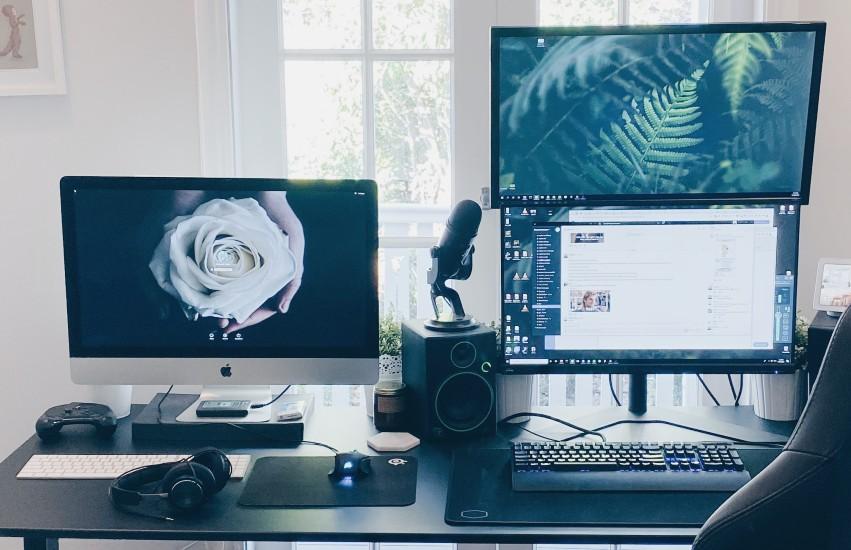5 Video Interview Tips That Will Set You Apart from the Pack
Published: Mar 05, 2021

In a recent blog, I outlined my five-step method for professional networking. I offered a perspective on how the strategy for conducting informational interviews is just as applicable today as it was 10 years ago when I entered business school. However, unlike informational interviews, job interviews—and the rules for acing them—have changed significantly in the past decade. As an increasing number of organizations have pivoted to remote work, especially in the past year due to the pandemic, video job interviews are no longer the exceptions but the norm.
So, below are my essential tips for nailing your video interviews—and setting yourself apart from other candidates.
1. Don’t use a virtual background
Getting ready for virtual interviews requires intentionally preparing your environment. Pick a designated corner or room in your home that’s conducive to a one-on-one virtual interaction. Several video conferencing platforms such as Zoom and Microsoft Teams offer features that allow you to blur the background or apply a virtual image to the background during the video call. It’s not advisable to use this option because it creates a façade, as though you’re trying to hide something. You don’t necessarily need a studio-quality backdrop or fancy bookshelf either. Having a simple white wall in the background, rather than the Golden Gate Bridge or Waikiki Beach, will make you appear more authentic and trustworthy.
2. Mindfully choose the color of your shirt
You likely know how to dress appropriately for an in-person interview, but interviewing on camera requires you to be extra mindful—of the color patterns in your surroundings. For example, if your backdrop is a white wall, it’s not recommended to wear a white shirt because your computer’s camera will blend you in with your background. In general, it’s better to choose darker, conservative color tones in solids, as opposed to stripes or patterns. Doing so will also make you appear more authentic and trustworthy.
3. Consider using a dual-monitor setup
Depending on the role you’re interviewing for, it can be extremely beneficial to use a dual-monitor setup—a primary monitor for the video feed and a secondary monitor for content sharing. The video interview format opens the avenue to share additional content above and beyond what’s typically possible in a traditional in-person interview. So, you can use your secondary monitor, the one earmarked for content sharing, to share work samples and related artifacts should the opportunity present itself. It’s a great way to not just talk about your accomplishments but show them. Of course, you can also share content without a dual-monitor setup, but two monitors will allow you to keep your interviewer in your field of vision as you share content, so you can gauge your interviewer’s interest and reactions to what you’re sharing.
4. Use the whiteboard function
In addition to queuing up content on your secondary monitor, make liberal use of the whiteboard. Popular video conferencing platforms such as Zoom and Microsoft Teams come with whiteboard features that allow participants to jot down thoughts and brainstorm ideas. During your video interview, if the interviewer engages you in active problem solving or business cases, like those that are popular in management consulting, use the whiteboard as the medium to engage with your interviewer, as opposed to taking notes on a separate paper. This can significantly improve the quality of your interaction with your interviewer.
5. Make eye contact
One of the biggest challenges with presenting your best self virtually is the dearth of traditional norms such as handshakes and eye contact that we tend to use during in-person interaction to establish rapport. During the virtual interview, it’s important to look at the camera and not at your screen when trying to establish eye contact with your interviewer. This is easier said than done because we’re creatures of habit, and we’re used to looking at people’s faces when talking to them—we use this technique not only to communicate but also to receive non-verbal feedback, and we’ve been doing it for so long that it’s been ingrained in our modus operandi.
However, with perseverance, we can form new habits. So, the next time you get on a video chat with friends and family, try to make eye contact by looking at your camera (that tiny blue or green dot). If you’re deliberate about doing this over and over, eventually it will morph into an instinct—and become second nature in your video interviews.
Recipient of a Presidential Award from The White House, Vibhu Sinha is an intrapreneurial and bottom line-driven senior management professional with experience in leadership roles across banking and capital markets. He has advised institutional clients on corporate strategy, idea generation and pitching, financial planning and analysis, M&A, investor relations, and ESG. Vibhu developed his acumen in behavioral psychology at Harvard University as part of a master's degree program and also earned an M.B.A. from UCLA Anderson.